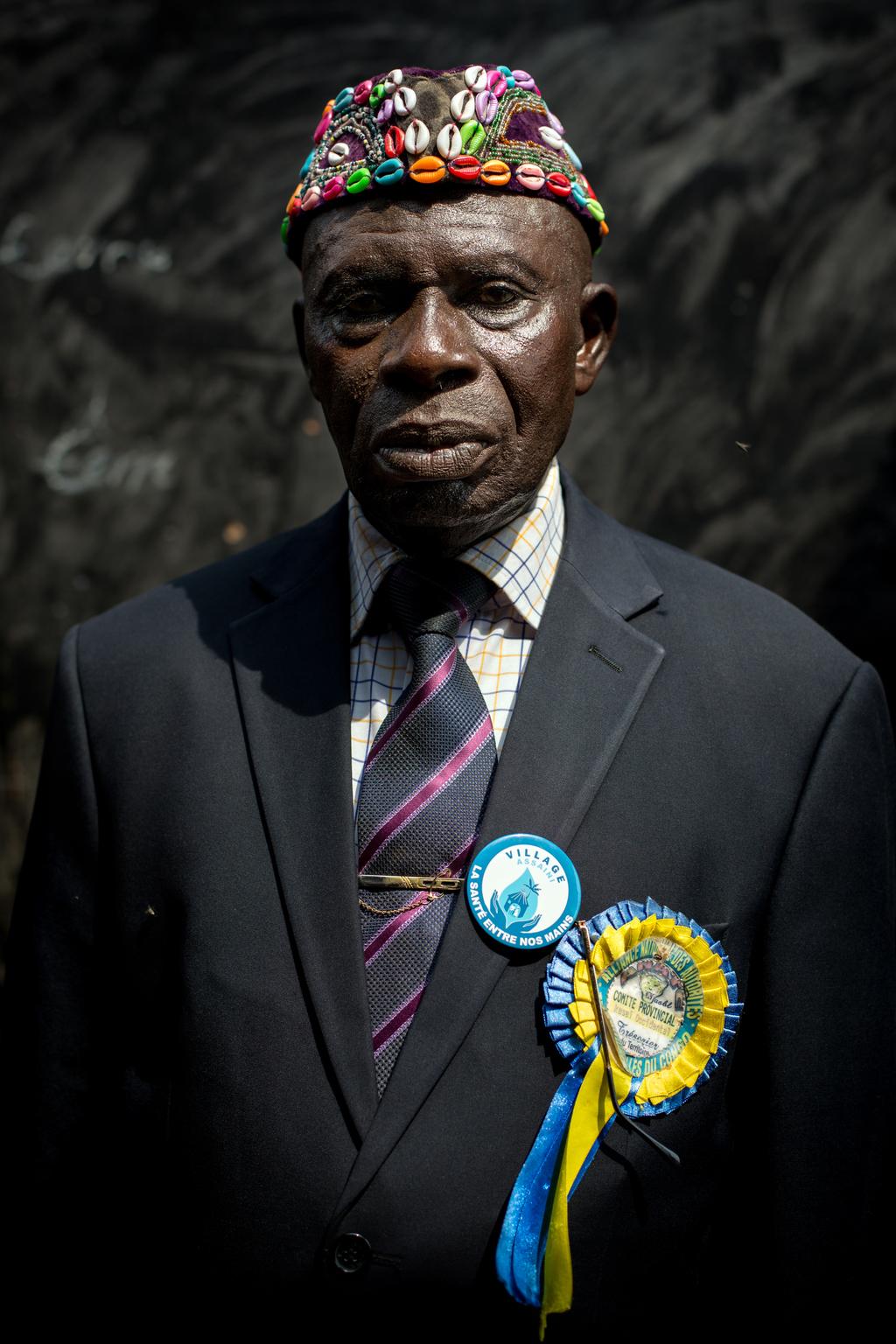In August 2016, fighting broke out in Kasai - one of the Democratic Republic of Congo’s (DRC) poorest regions, after a traditional leader was killed in clashes with security forces. As the crisis escalated in 2017, violence spread to nine of the country’s 26 provinces, with devastating results for children. Children have been killed, maimed and used in combat and at least 850,000 displaced. To help UNICEF's life-saving efforts in the DRC, click here.
A child suffering from malnutrition eats ready-to-use therapeutic food provided by UNICEF at the health centre in Tshinyama village, May 2017. As of July 2017, UNICEF and its partners have treated 2,734 children suffering from severe acute malnutrition, but 400,000 remain at risk.
“The militias threatened the students and the teachers. They forbade the students from resuming classes”, says chief Tshipanba Ntalaja, standing in a damaged classroom at the school in Tshibambula village, May 2017.
As of June 2017, field staff have documented attacks on 404 schools. Many other schools are now occupied by displaced people and military. More than 150,000 children are missing out on school. A primary school classroom which was looted during clashes in March between the militia and security forces, in Tshinyama, May 2017.
Children demobilized from the militia of the traditional leader eat food in a Transit and Orientation Centre run by a UNICEF-supported local NGO, in Kananga, May 2017. Between 40% and 60% of the militia members are children, often younger than 15, which constitutes a war crime.
UNICEF and its partners provide children released from militias with urgent medical care and psychosocial support, as well as family tracing and reunification. At the Transit and Orientation Centre in Kananga in May 2017, demobilized child soldiers attend a vocational gardening course.
Community volunteers maintain UNICEF-built latrines and showers, a key means of protecting against cholera and other water-borne diseases, at the health centre in Tshinyama, May 2017.
Students attend a remedial class organized by UNICEF to prepare their end of school year examination at the Citolo Primary School in Kabea Kamwanga, May 2017. Forced to flee violence in October 2016, the students were only able to resume their education in March 2017 with UNICEF support.
A nurse screens a child for malnutrition at the health centre of Tshinyama, May 2017. As well as providing therapeutic food to children in nutritional centres, UNICEF trains community workers to screen children for severe acute malnutrition and refer them for treatment.
Children carry containers filled with water drawn from a UNICEF-built water point in Tshinyama, May 2017. Unless violence in the Kasai region comes to halt, the future of an entire generation of children is at risk.
To help UNICEF's life-saving efforts in the DRC, click here.










